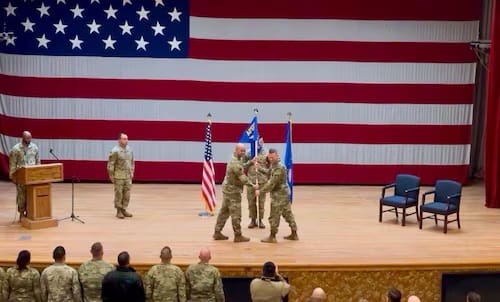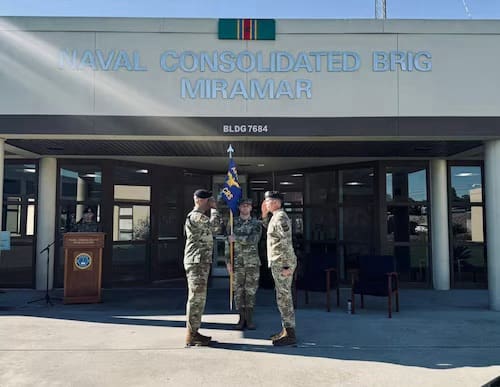JOINT BASE SAN ANTONIO-LACKLAND, Texas (AFNS) —
The Air Force Security Forces Center recently transitioned its detachments to a squadron structure to return the units to a familiar organizational framework.

The process began earlier this year when Air Force Materiel Command published a special order to inactivate AFSFC’s Detachment 2 at Marine Corps Air Station Miramar, California, and Detachment 3 at Fort Bliss, Texas. The document also activated the 320th Correctional and Rehabilitation Squadron at Miramar and the 570th Combat Training Squadron at Fort Bliss.
“Both the 320th CRS and 570th CTS deliver very unique mission sets,” said Col. Jason Harris, AFSFC commander, “so it was important to move them within a formal squadron structure – a hierarchy our Airmen have worked with before – which brings a renewed sense of excitement and purpose to those units.”
Lt. Col. Scott Haselden, 570th CTS commander, echoed Harris’ thoughts.
“Our members will have a more heightened sense of pride being associated to a numbered squadron … having a designation of a squadron with a rich combat training history, resonates to the heritage of the security forces combat mindset,” he said. “To identify as a combat training squadron also validates what they do every day, and I know they will wear their 570th CTS patches proudly on their sleeve.”
The change delivers not only a benefit to the training and corrections mission sets but a boost to the career development and recognition opportunities for Airmen as well.
“A key benefit of this transition is that it streamlines the process for current and future leadership to formally recognize the achievements, hard work and dedication of our Airmen with decorations signed by their squadron commander, something that wasn’t possible under the previous detachment structure,” said Maj. Dane Johnson, 320th CRS commander.
As a geographically separated detachment with our headquarters in San Antonio, we faced numerous administrative challenges, Haselden said.
“With 140 active-duty and civilian members assigned, as well as another 43 Active Guard Reserve and Air Force Reserve Command members, we always had to look for ways to alleviate those challenges to streamline our processes and provide better support to our members. In addition to resolving our administrative matters, being a squadron provides justification for manpower validations to establish better organizational infrastructure to support our instructors with squadron manpower standards not associated with detachments,” he added.
The change also continues to strengthen the opportunities for career development and mentorship which, along with recognition, are key to maintaining morale and fostering a positive work environment, Johnson said.
In the case of the 320th CRS, it also improves the Air Force’s ability to collaborate with other sister services.

“While our primary customers, the prisoners, may not be directly impacted by this organizational shift, there are indirect benefits,” Johnson said. “The transition strengthens our operations with our sister services, particularly the Navy, which in turn can lead to a more efficient and effective support system for our incarcerated population and further strengthen inter-service partnerships.”
The 320th traces back to the 3320th Retraining Group at Amarillo Air Force Base, Texas. It was activated in 1951 with a mission to rehabilitate and reintegrate Air Force personnel convicted of military offenses such as absent without leave, desertion and insubordination – actions not considered criminal in the civilian sector. In 1968, with the closure of Amarillo AFB, the training group relocated to Lowry AFB, Colorado, where, in 1971, the 3320th Corrections and Rehabilitation Squadron was established under the group. Until its inactivation in 1993, the unit returned more than 8,000 inmates to active duty.
The 570th traces its lineage to the 6570th Security Police Squadron initially activated Aug. 1, 1978, at Brooks Air Force Base in San Antonio as part of Air Force Systems Command’s 6570th Air Base Group. It was inactivated Oct. 1, 1992, shortly after the standup of AFMC.
By Debbie Aragon
AFIMSC Public Affairs

